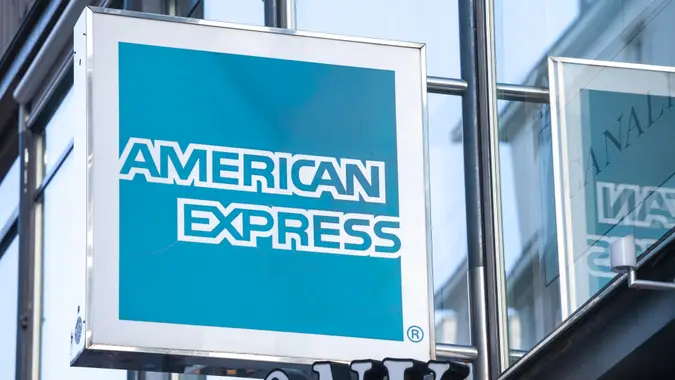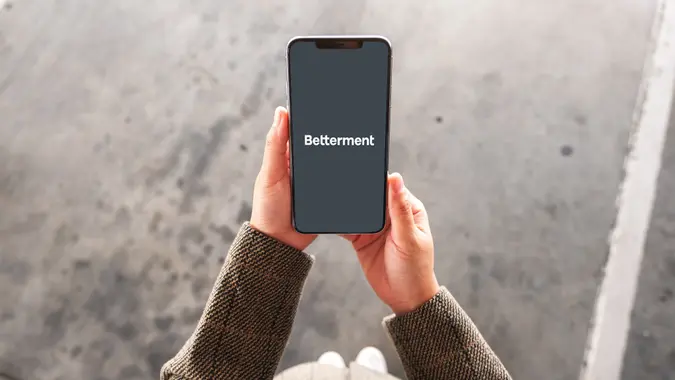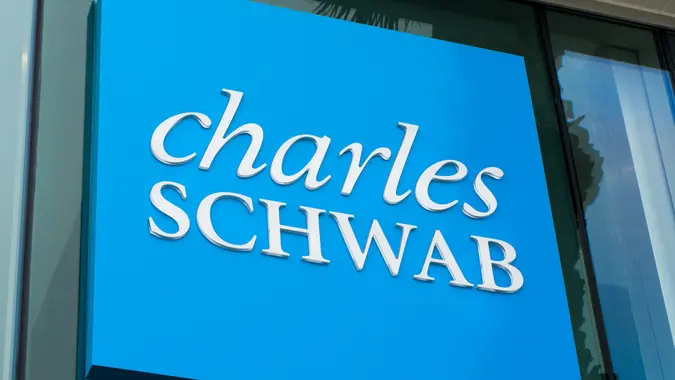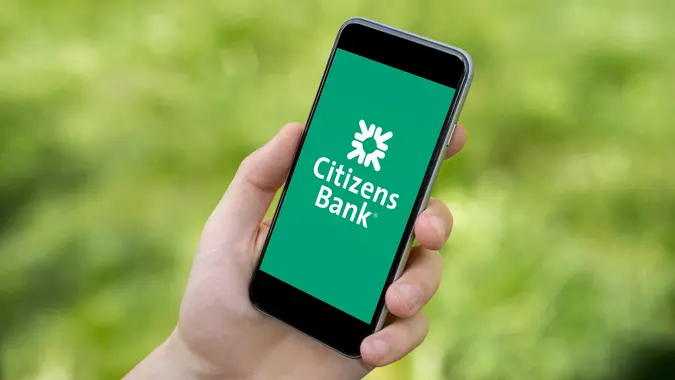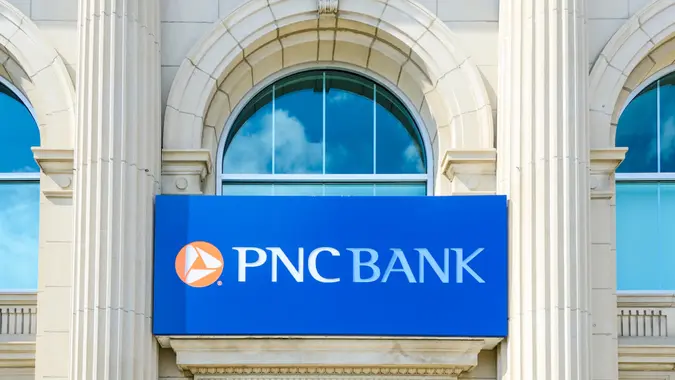5 Bank of America Email Scams To Watch Out For

Commitment to Our Readers
GOBankingRates' editorial team is committed to bringing you unbiased reviews and information. We use data-driven methodologies to evaluate financial products and services - our reviews and ratings are not influenced by advertisers. You can read more about our editorial guidelines and our products and services review methodology.

20 Years
Helping You Live Richer

Reviewed
by Experts

Trusted by
Millions of Readers
If you have a Bank of America, Member FDIC, account, you may have received an email that looked like it was from your bank but was actually a scam. As with any big bank or large company, scammers target names like Bank of America and reach out to their customers in phishing scams.
What Are Bank of America Email Scams?
Scammers target customers through email or text messages and try to get the recipient to disclose sensitive information, such as account numbers and login info. There are several different types of scams.
Fortunately, you can avoid becoming a victim by knowing how to recognize them.
Phishing Scams
One of the most common scams occurs when a Bank of America customer receives an email or text message notifying them of “unusual or suspicious activity” on their account. The message might provide a phone number to call or a fake website to visit.
When you call the number or visit the website, you’ll be asked to provide sensitive account information to confirm the account is yours. The website may also install malware on your computer.
Account Takeover Scam
Similar to the “fraudulent activity” scam, you might receive an email or text saying that you need to verify your Bank of America account. The language in the email will likely feel very urgent and make you feel like you need to drop everything and take care of this now. Again, it might send you to a fake website to verify your sensitive account information, including your social security number.
Other Scams to Be Aware of
Email isn’t the only way scammers might try to steal your account info. Be aware of:
- Vishing or voice phishing: This is when someone calls you and pretends to work for Bank of America. Similar to the scams above, they might claim they urgently need account info.
- Check Fraud: You get sent a check for more money than you expected. The scammer asks you to deposit the check and then send back the extra money. Instead, the check bounces.
- Fake Loan or Credit Card Offers: A scammer posing as a bank employee tells you that you qualify for a special offer. They tell you to claim the offer you have to pay a processing fee.
How to Recognize Scams
It can be difficult to spot a scam. After all, they want to trick you. However, there are some tips to follow that can protect you.
If you receive an email from Bank of America, check for:
- Typos and poor grammar in the email
- Sender email addresses that don’t look like official Bank of America email accounts
- Language that makes you feel like the situation is an emergency. Scammers want you to act before you have a chance to think.
Never log in to your bank account through a link in an email or use a phone number in the email. Even if an email or letter looks like it has the logo of the bank, it’s better to go to your bank’s website, look up the customer service number, call and have an employee confirm that the bank is trying to reach you.
How Bank of America Protects Customers from Scams
Bank of America recommends that you set up two factor authentication. That way, if someone gets your account information and tries to log in, they won’t be able to without the second code.
They also recommend using the mobile app for more secure communications. Their website also states that they will never ask you to email personal information like your account number, social security number or password.
What to Do If You Fall Victim to a Scam
If you think someone has access to your bank account or you noticed charges you didn’t make, call Bank of America’s customer service right away. They will give you instructions on how to handle the situation.
FAQ
- How can I tell if an email is a Bank of America phishing scam?
- Some things to look for are strange email addresses, grammatical errors and a false sense of urgency.
- What should I do if I get a suspicious call claiming to be from Bank of America?
- Do not give the person on the line any information. Hang up, look up the customer service number on Bank of America’s website and have them verify that the bank is trying to reach you.
- Does Bank of America cover losses from scams?
- Yes, Bank of America has a $0 Liability Guarantee. If you report all fraudulent details right away, you will be covered.
- How can I protect my Bank of America account from scams?
- Be very careful about any unprompted emails, text messages or phone calls you receive about your bank account. When in doubt, call the customer service line using the number on the website to verify all communications.
More About Bank of America
- Bank of America Review
- Bank of America CD Rates
- Bank of America Savings Account Interest Rates
- Bank of America Hours
- Bank of America ATM Limits
Editorial Note: This content is not provided by any entity covered in this article. Any opinions, analyses, reviews, ratings or recommendations expressed in this article are those of the author alone and have not been reviewed, approved or otherwise endorsed by any entity named in this article.
Editorial Note: This content is not provided by any entity covered in this article. Any opinions, analyses, reviews, ratings or recommendations expressed in this article are those of the author alone and have not been reviewed, approved or otherwise endorsed by any entity named in this article.
 Written by
Written by  Edited by
Edited by 



